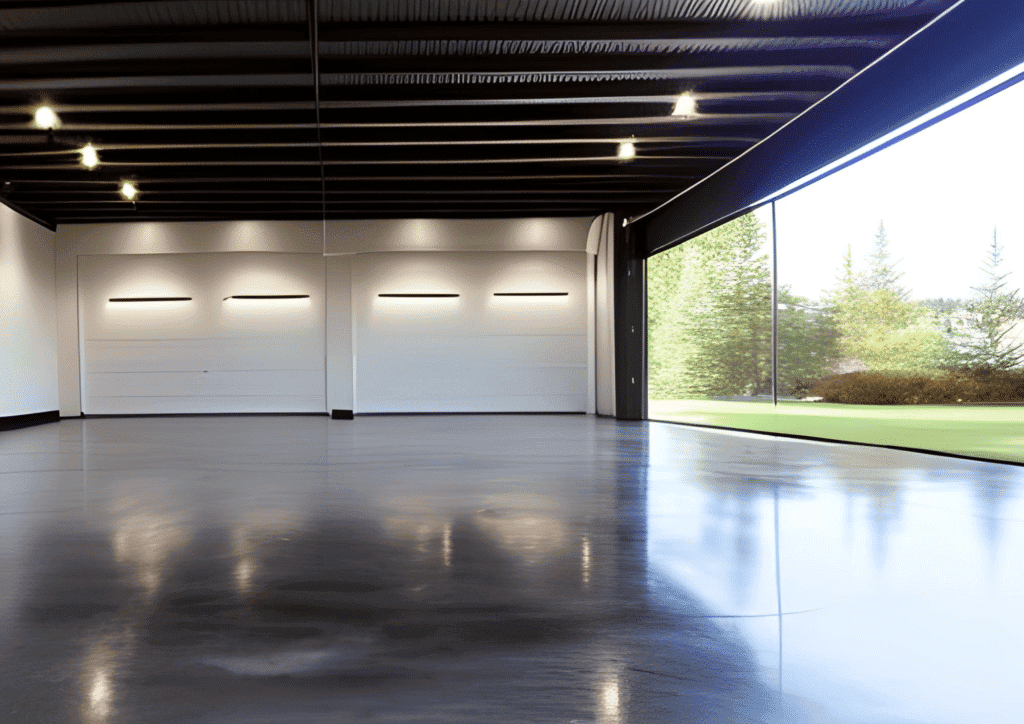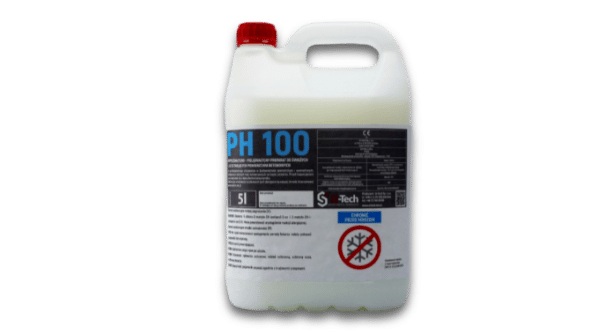
Balcony, terrace or garage floor – these are just some of the places where coatings are needed to protect floors from humidity, weather or mechanical factors. When carrying out a renovation or repair of a concrete floor, you can use liquid sealing and insulating film for this purpose. You will use it to protect concrete surfaces inside but also outside. How to apply this liquid material and how much is the price per m2? Check out our guide and you will learn everything important about liquid insulation.
What is liquid film and what is it used for?
Protecting concrete floors from moisture or oil soaking requires the use of appropriate measures. Among them is liquid sealing film. It is a liquid product that is suitable for protecting various building surfaces, but its primary sector of application is concrete floors, both freshly made and old, that is already in use. It can be used not only indoors, but also outdoors – thanks to it you will impregnate, for example, high quality concrete, maneuvering yards, parking lots and outdoor roads! The product can also be used when building a balcony or terrace.
This insulating material comes in several variants. Individual impregnants for concrete differ in performance, applicability (or lack thereof) on specific surfaces, as well as price. Liquid products for renovation and construction work thus meet individual needs, guaranteeing optimal results in protecting walls and floors.
Properties of liquid film
What properties are distinguished by liquid film? Liquid waterproofing membrane is a highly flexible product with good adhesion to diverse surfaces. Thanks to its versatility, it can be used for waterproofing, among other things, on concrete substrates. A big plus of this type of product is the guarantee of ease of application. Waterproofing products are supplied ready for application – all you need to do is apply it to the floor surface with a spray or roller. Importantly, after just one layer, the liquid film closes the micropores of the concrete, leaving a thin film, which gradually degrades as a result of the natural use of the floor after the maturation period (in the case of fresh concrete).
Si-Tech brand concrete waterproofing membranes are distinguished by a number of features that help improve the properties AND operation of floors. Among other things, by sealing the substrate, concrete waterproofing films increase frost resistance, especially of seasoned substrates. The liquid sealer and insulating material is also a fast-drying agent that helps optimize working time. The length of drying depends on the area of waterproofing and the application conditions.
How long does liquid film for concrete impregnation dry?
The average drying time of one layer is 1 to 3 hours for P100, P200 and P300 formulations, which are based on solvent-based acrylic resin dispersions. In contrast, a liquid film based on PH100, which is an aqueous dispersion of acrylic resin, can dry as long as 6 to 10 hours.

Liquid film for impregnation of concrete – where to use?
Concrete floor waterproofing formulations for industrial applications are first of all a common choice for rooms with high humidity or high levels of use. There is nothing to prevent liquid sealing films from being used outdoors as well. Examples include parking lots, terraces, maneuvering areas, outdoor areas of airports, screeds, road concretes or outdoor roads. The paraffin-based PHW100 impregnant will undoubtedly help in their protection.
Are impregnations for concrete necessary?
It would seem that a surface-cured concrete floor (for example, using Romix or Romix BL silicon curing topping) is inherently resistant to all factors – atmospheric, mechanical or environmental. However, concrete is like a skin – it has pores through which all sorts of chemicals, water or pollutants can penetrate, and as a result, this can lead to much faster degradation of the substrate, frost cracks or shrinkage micro-scratches resulting from the rapid drying of a freshly made floor.
The unprotected floor is also not sufficiently resistant to abrasion or dust, so it is advisable and suggested to apply a liquid film immediately after the floor is smeared, which adequately increases frost resistance, reduces the formation of micro-scratches, chloride penetration, oil and water absorption, and ensures optimal and proper maturation and sealing of the surface of fresh concrete, leaving a thin protective layer that seals the floor.
Liquid film – how to use the material for insulation and sealing?
A properly selected set of materials, as well as technical preparation and knowledge will make it possible to perform protection of the floor, as well as outdoor surfaces from the effects of water and weathering. It should be borne in mind that the use of liquid film for impregnation, along with other preparations and accessories, requires adherence to several main rules of conduct. Where to start working with impregnants for concrete?

Substrate preparation
Wanting to use the full potential of liquid sealing film, you need to remember to properly prepare the surface. Substrates must be free of dirt, dust, debris and standing water. Only when the concrete substrate does not show any contraindications can the liquid film be applied, tailored to the environmental conditions and investment requirements or design assumptions. For application indoors or outdoors, a spray, roller or brush method is sufficient.
Liquid film application
Once the surface is primed, you can proceed with waterproofing. The layer of preparation must be evenly distributed – otherwise it can cause stains. If you are dealing with an area particularly prone to drying out due to high temperatures or draught, it is recommended to cover the impregnated surface with foil or geotextile after the preparation has dried.
When applying to an old substrate, adjust the amount of preparation to the absorption capacity of the substrate. After applying the suggested amount of preparation, we wait until it is completely dry. If you do not notice a clearly glossy coating we repeat the application, remembering that the absorbency of the substrate has been significantly reduced, so the amount of preparation should be correspondingly lower.
If we will want to apply other layers (e.g., resin flooring) to the impregnated concrete, an adhesion test should be carried out, and if the material used will require direct contact with the concrete, the resulting layer should be removed by mechanical means (grinding, blasting, milling).
Choose the best materials for concrete impregnation
If you want to use the help of professionals, you should also take into account the cost of labor, as well as the purchase of additional accessories. Liquid film itself is a product whose performance depends on its purpose, the absorbency of the substrate and the environmental conditions. More details can be found in the catalog of construction chemicals offered by our company. And if you are wondering what articles for repair and construction work to choose, contact us. Feel free to contact us now!

 Concrete impregnate P100
Concrete impregnate P100  Concrete impregnate P200
Concrete impregnate P200  Concrete impregnate P300
Concrete impregnate P300  Concrete impregnate PH100
Concrete impregnate PH100  Concrete impregnate PHW100
Concrete impregnate PHW100